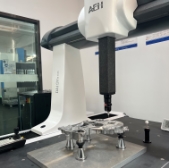
Auto Oil Pump Knowledge
The automotive industry is a rapidly evolving sector, constantly introducing new technologies and innovations. One crucial component that ensures the smooth functioning of a vehicle's engine is the oil pump. Being responsible for lubrication and cooling, oil pumps are vital for maintaining the engine's operational efficiency. This article aims to provide a comprehensive guide to auto oil pump knowledge, including its construction, factors affecting selection, and the importance of meticulous design.
Construction and Operation:
Oil pumps are available in various shapes, sizes, and materials, depending on their intended use. Generally powered by the engine's crankshaft, they employ a set of gears to drive the pump's rotor. The rotor then pulls oil from the engine's oil pan and circulates it through a network of passages and channels throughout the engine. This ensures adequate lubrication of all moving parts. With their critical role, oil pump design is of utmost importance in preventing engine damage.
Selection Factors:
Selecting the right oil pump for a specific application requires considering multiple factors. Engine size, oil viscosity, and temperature are essential considerations in determining the correct pump for optimal performance. Engine specifications should align with the pump's capability, ensuring proper oil circulation and lubrication. Furthermore, precision and reliability are crucial attributes of an oil pump to prevent catastrophic engine failure.
Advanced Engineering Techniques and Materials:
To meet the demands of the automotive industry, oil pump manufacturers employ advanced engineering techniques and materials. These enable the creation of efficient, reliable, and durable pumps. Common materials used in oil pump construction include cast iron, aluminum alloys, and high-strength plastics. Furthermore, computer-aided design (CAD) software aids in generating complex pump designs, facilitating rapid prototyping and testing.
The Importance of Rotor Design:
The rotor is at the heart of any oil pump, responsible for pulling in and driving oil through the engine. The rotor's design plays a critical role, with various types available for different applications. For instance, gerotor pumps employ an external rotor and an internal rotor, creating a positive displacement pump. On the other hand, gear pumps utilize gears that mesh together to deliver oil efficiently.
Understanding the fundamentals of auto oil pump knowledge is vital for anyone involved in the automotive industry. The complexities of oil pump construction, the factors influencing pump selection, and the importance of meticulous design underscore the critical role of this component in maintaining engine health. By embracing advanced engineering techniques and materials, manufacturers can produce reliable, efficient, and durable oil pumps that ensure optimal engine performance and longevity.







